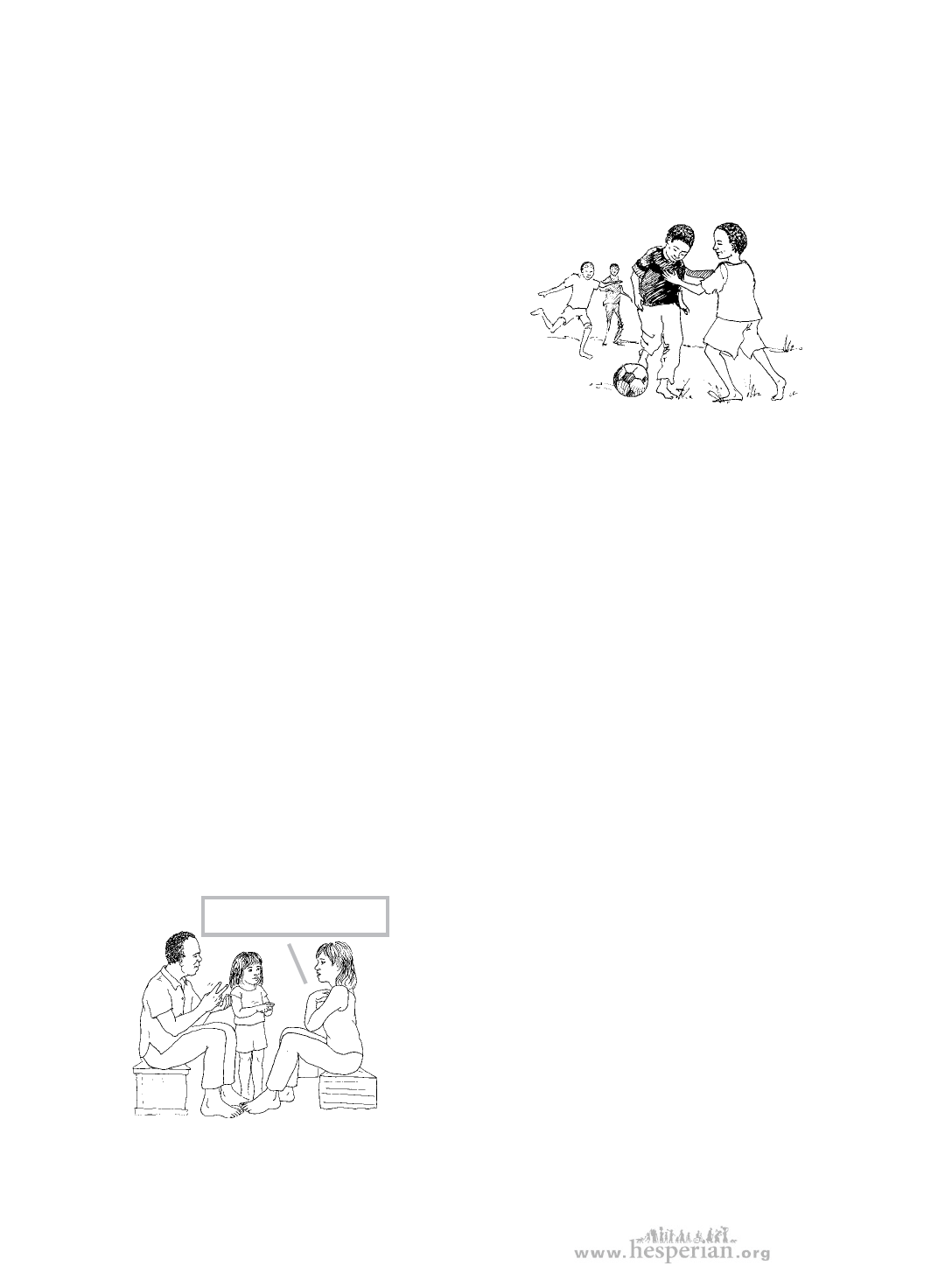
140 working together to help children who are deaf
Children who learn and play together form a community
Children are a natural community for each other. But children need
encouragement to include others who are different from them —
whether they are deaf or have some other difference.
Adults and older children can help children learn
to respect others and to develop qualities like
patience, fairness, and caring. For more
information about how to encourage
children with different hearing abilities
to relate to each other, see Chapter 10 on
developing social skills.
Deaf people form a community
Sometimes, people who are deaf may feel there is no community that
cares about their welfare. In many communities, people who are deaf or
cannot hear well are made to feel unwelcome by their families, relatives,
neighbors and others who do not know how to communicate with them.
Sometimes other people laugh at them and tease them. And it can be
especially hard for parents of a deaf child to see their child getting teased
by other people. Wherever they are, people who are deaf or cannot
hear well often face similar problems. Many deaf people still have few
opportunities to take their place within society.
Deaf people often feel a close bond with each other because they face
similar problems and share a similar way of communicating, like sign
language. Whether they live nearby or must travel to visit each other,
deaf people play a very important part in each other’s lives.
Anywhere there are 2 or more
deaf people together, there is a
community — created by the
common experience of being deaf.
Oh, I know. Me too!
People who are deaf can be a source of
comfort and guidance to each other.
When they can meet together they
usually form very strong communities.
Communities may form around deaf
schools, as deaf children learn and
grow up together. Or deaf people may
gather in deaf clubs, work cooperatives
or religious organizations.
Deaf adults can also be a great help to
families that are raising deaf children,
because they understand the needs and
challenges these families often face.
Helping Children Who Are Deaf (2004)